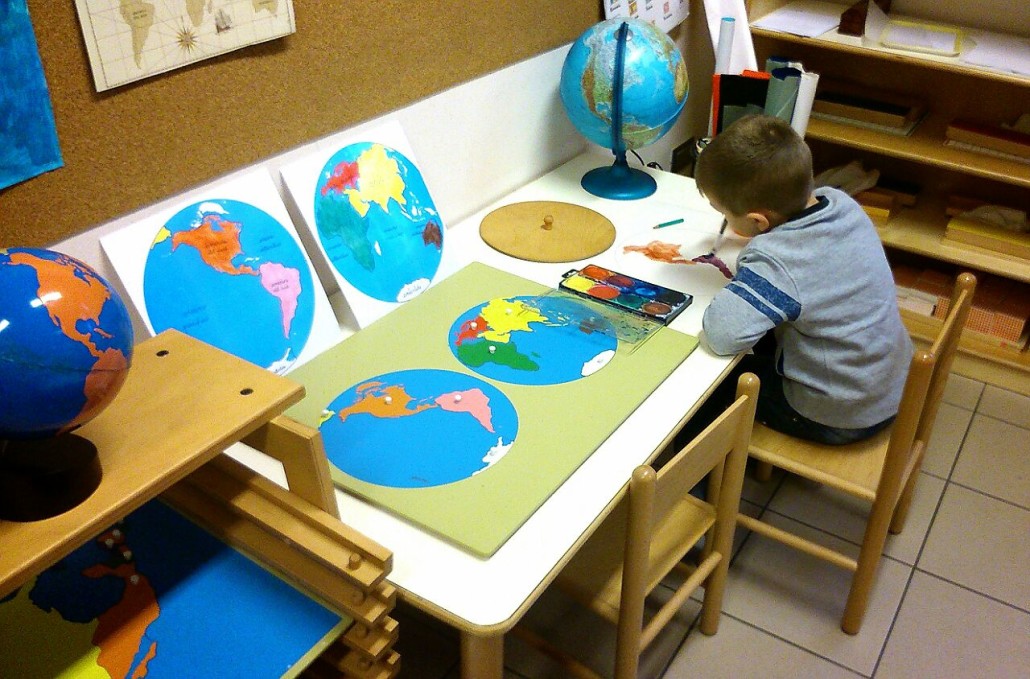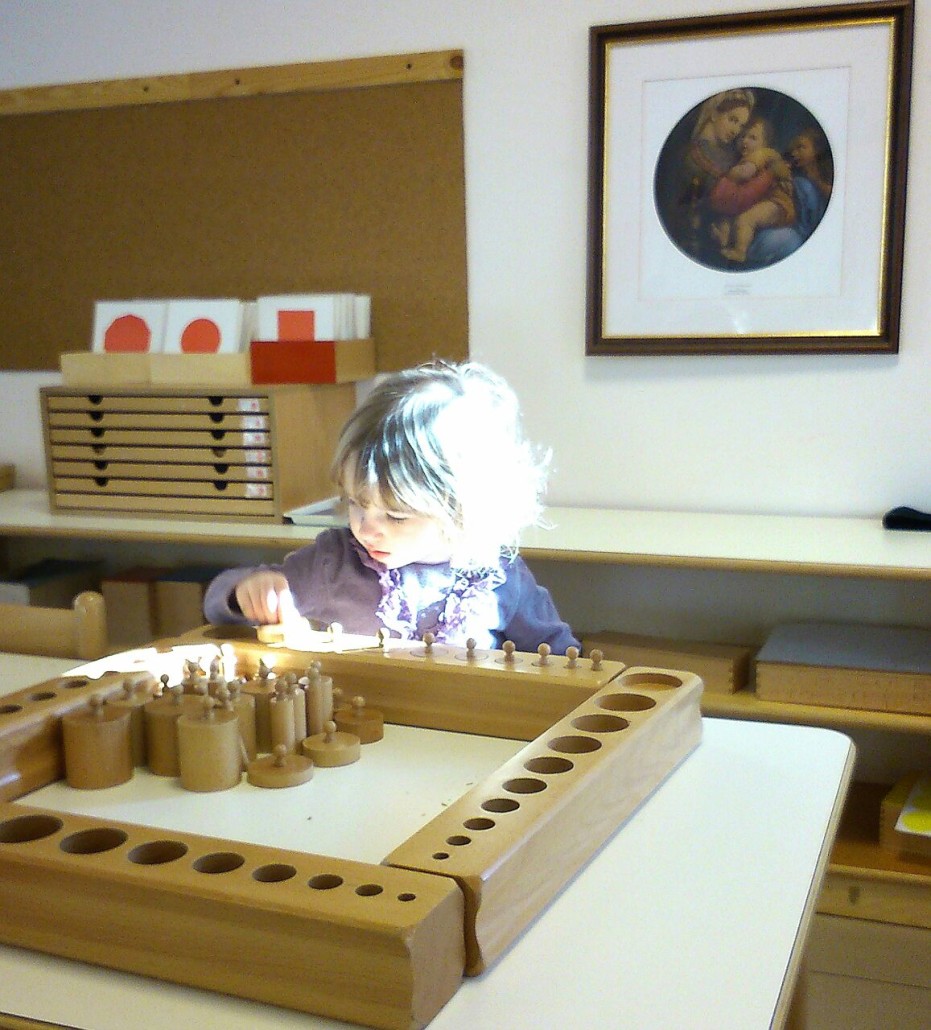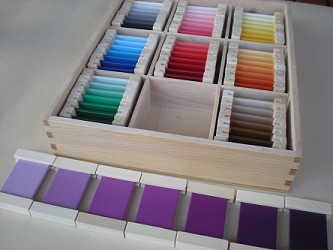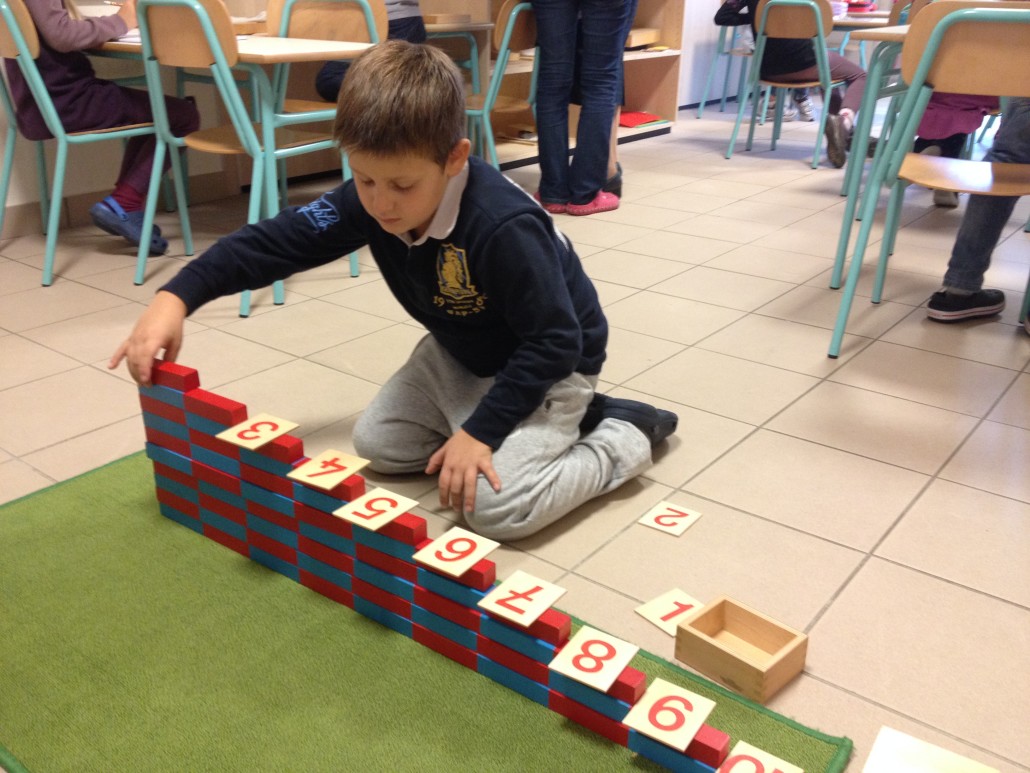Il materiale Montessori
Lettere dell’alfabeto da prendere in mano e da riconoscere con il tatto, forme geometriche di ogni tipo, aste di varia lunghezza per assimilare i concetti di lungo e corto, moltissimi strumenti per imparare a contare, tavolette di diversi pesi, modelli per comprendere piante e animali, il territorio geografico, sono solo alcuni esempi del materiale Montessori.
Con il Metodo Montessori si apprende attraverso l’uso delle mani poiché attraverso il “fare” si interiorizzano i concetti: la mano è stata definita l’“organo dell’intelligenza” da Maria Montessori che ha inventato una serie di oggetti utili per imparare.
Il bambino, soprattutto quello tra tre e sei anni, è ricettivo come una “spugna” ed è predisposto ad assimilare una grande quantità di informazioni e di abilità principalmente attraverso i sensi: con il materiale il bambino impara a riconoscere l’ambiente, a stabilirne le caratteristiche costituenti e le gerarchie e, gradualmente, ad astrarre. Questo sistema di organizzazione del mondo in un sistema di categorie ordinate e chiare è il trampolino di lancio per nuove esplorazioni e scoperte. Forma, dimensione, consistenza, peso, rumore, sapore, odore sono qualità su cui il bambino lavora per stabilire similitudini, grandezze, uguaglianze, differenze , gradazioni, etc.
Una volta presentato dall’insegnante l’utilizzo, il Materiale Montessori è adatto a un uso individuale e autonomo in quanto consente anche al bambino di controllare l’errore.




Un esempio delle applicazioni del materiale Montessori è quello che riguarda l’apprendimento della matematica, materia molto importante nella vita quotidiana dal momento che il “numero è dappertutto”. Una mente matematica indipendente e con la capacità di risolvere i più vari problemi necessita dello sviluppo di concentrazione, ordine, coordinazione e indipendenza. Per far ciò, lo sviluppo sensoriale è fondamentale per costruire le basi del pensiero matematico.
Per un apprendimento “appassionato” della matematica i bambini hanno bisogno di osservare, senza essere messi sotto pressione e fretta, come i numeri crescono, diminuiscono, cambiano, si relazionano tra loro. E questo viene fatto in modo interessante e divertente, usando i materiali che aiutano i bambini a costruire solide fondamenta per i concetti astratti.
Il bambino sceglie liberamente il materiale adeguato alle sue necessità interne del momento: questa libera scelta aiuta l’insegnante ad osservare le sue necessità psichiche e le sue tendenze. Inoltre il bambino è lasciato libero di ripetere l’esercizio perché è il modo più adatto per permettergli di raffinare i suoi sensi e le sue abilità, e su di esse costruire.

